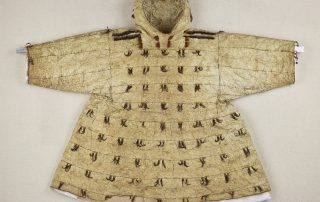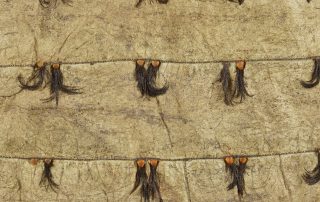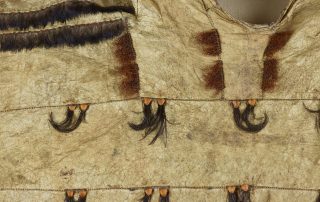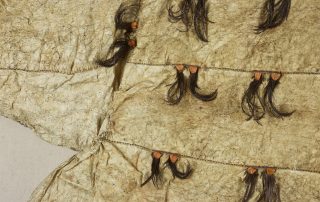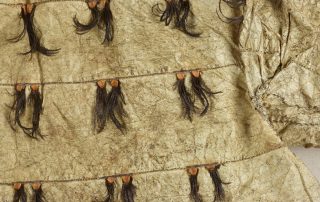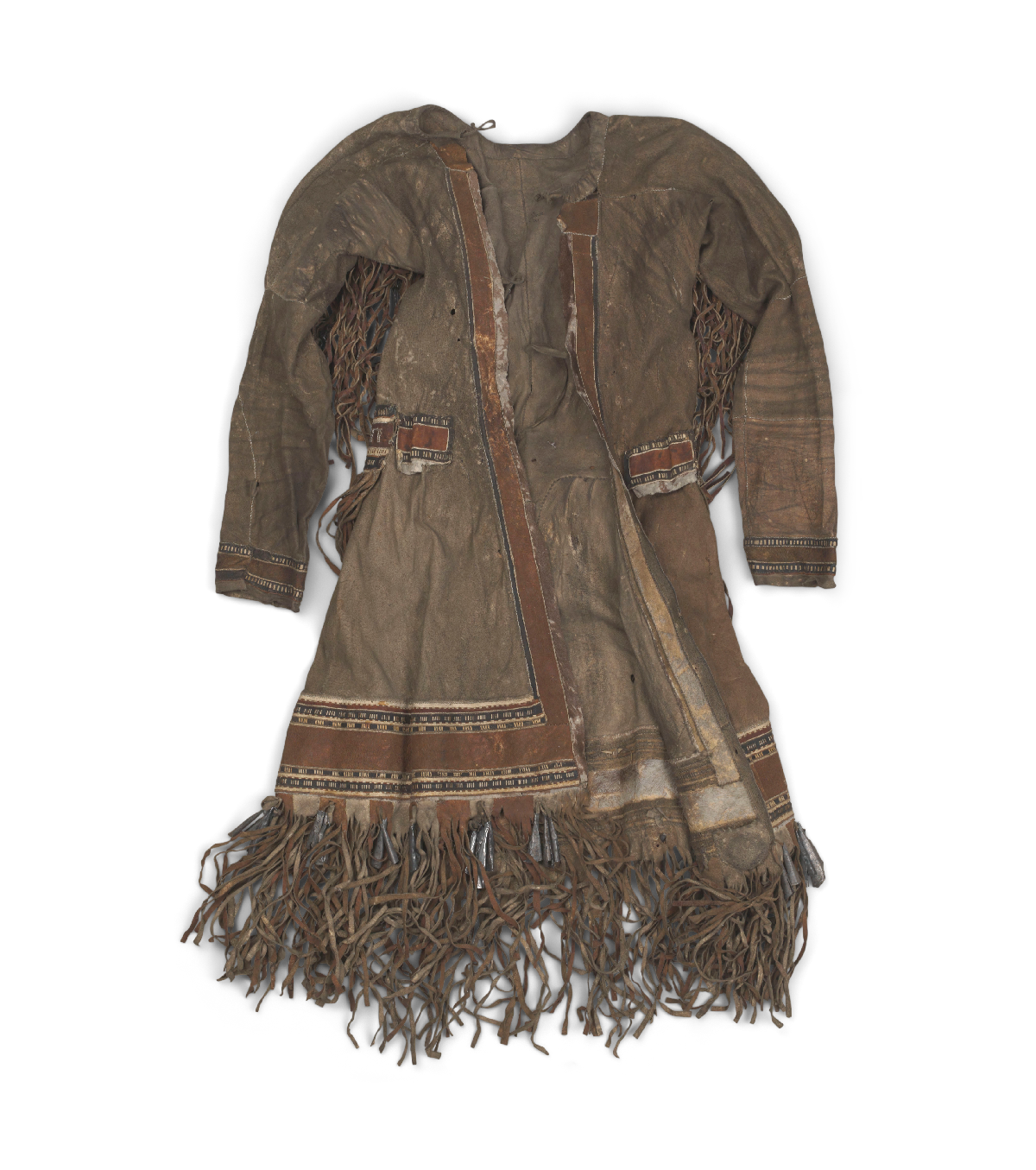Yupik Ceremonial Gut Parka
Ceremonial Gut Parka, ca. 19th century
Unknown maker, Yupik, Indian Point, Siberia
Bearded seal or walrus intestines, hide, walrus and seal fur, sinew, thread, beak parts, and crested auklet feathers, 36 1/4 × 26 3/4 × 4 in. (92 × 68 × 10 cm)
Repaired, date(s) unknown; conserved, 2016 and 2019
Courtesy the American Museum of Natural History, Division of Anthropology, New York City, 60/3715
Collected in 1901, this gut parka is an important item of Siberian cultural heritage. Siberian Yupiks process and dry the intestines of marine mammals under different conditions to produce “summer gut,” which is waterproof when wet and suited for practical use, or “winter gut,” which is considered sacred and reserved for use in ceremonial parkas such as this. Conservators who worked on this parka and others from the Jesup North Pacific Expedition (1897–1902) learned about and documented these practices—cultural knowledge that is increasingly at risk today—from Indigenous experts in Siberia, Alaska, and New York City. The conservation of the parka exemplifies the collaborative approach crucial to future care of such items. Laurel Kendall, curator at the American Museum of Natural History in New York, describes such efforts as spotlighting “Yupik life at the time the parka was made, Yupik heritage today, and the work of the museum’s conservation lab in consultation with Yupik artisans.”
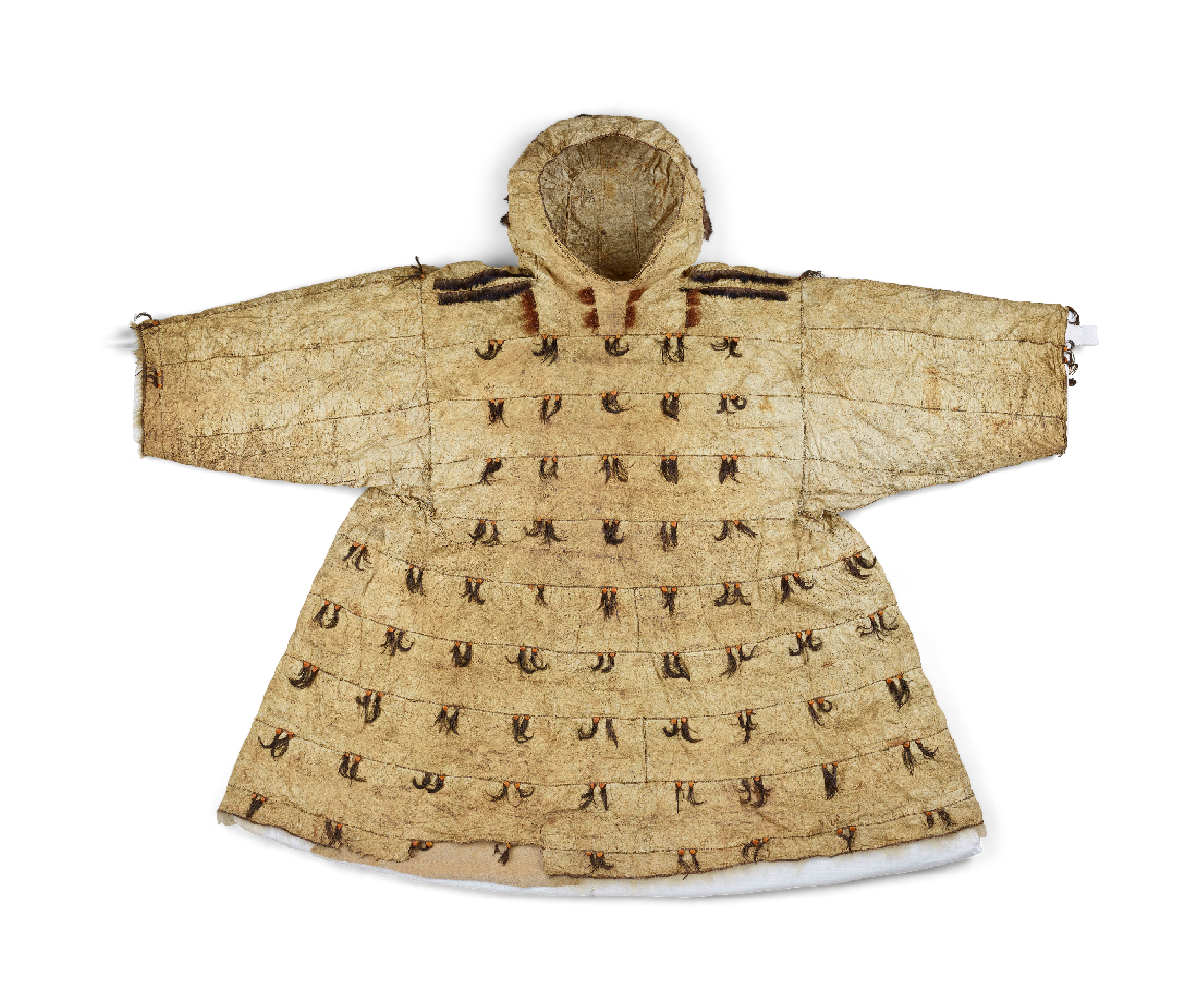
Click thumbnail images to view slideshow
See other items in Where is the Future of Conservation?


